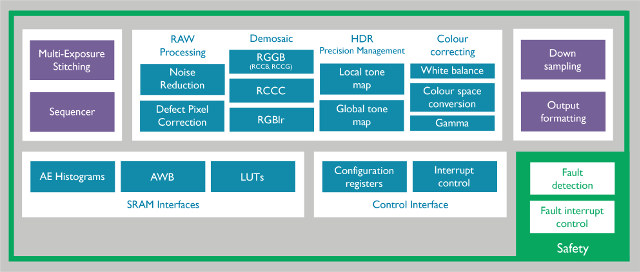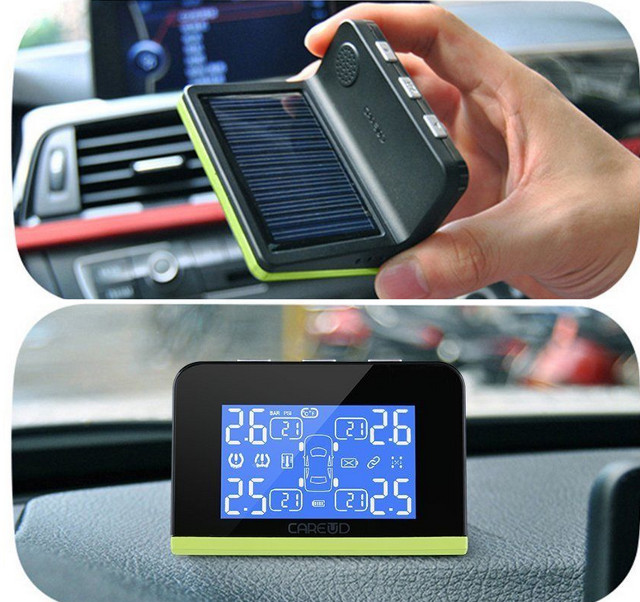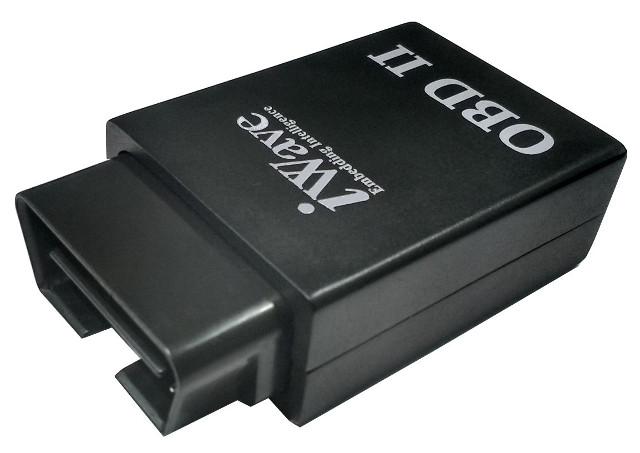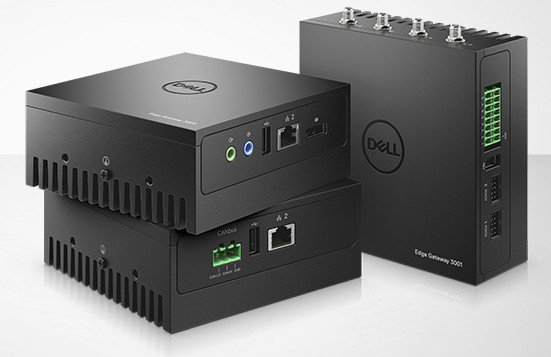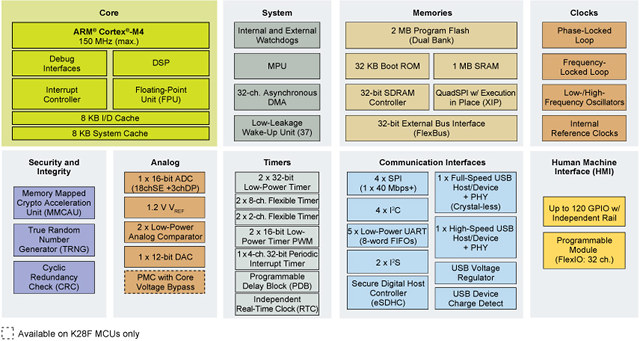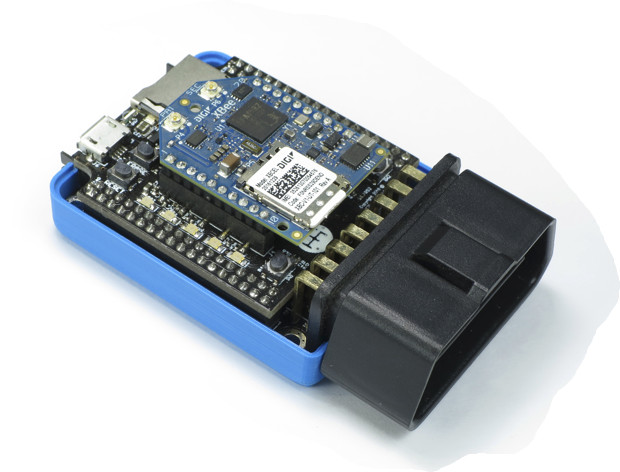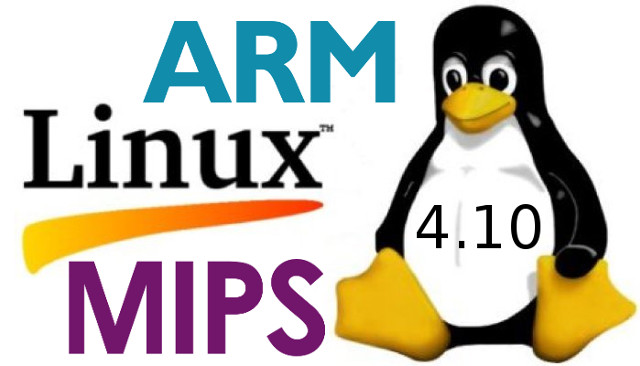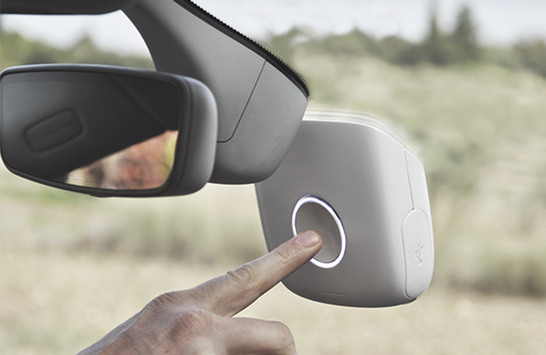A camera in an embedded system is normally connected to an ISP (image signal processing) block inside an SoC to handle the data coming from the sensor, and with recent cars now requiring more and more cameras for car DVRs, car parking systems, and self-driving vehicles, ARM has now unveiled Mali-C71 ISP specifically designed for automotive applications with support for 4 real-time cameras and 16 camera streams with a single pipeline. ARM explains that you can’t simply use smartphone cameras in automobile, as automotive requirements in terms of clarity and reliability are much more stringent. For example, Mali-C71 supports UWDR (Ultra-wide dynamic range) up to 24 stops, against 15 stops for the best DSLR cameras, which removes noise and process multiple exposures from the camera, and allows the processor/computer vision engine to detect objects such as a pedestrian, while others systems may not detect it. The image is also much […]
Solar Powered CAREUD U800WF Monitoring System Checks Your Car’s Tires Pressure
Every few months, we inflate (or deflate) our car tires at the gas station to match the pressures for front and rear tires given by the manufacturer. But if you want to make sure the pressures are always at their optimal levels, or close to it CAREUD U800WF pressure monitoring system might be a useful little gadget. The monitor that you can place on your dashboard comes with the following specifications: Display showing pressure with +/- 1.5 PSI accuracy and temperature with +/- 3 °C accuracy for all four tires; data updated every 3 seconds. Connectivity – 433.92 MHz RF Power Supply Solar Panel 5V via micro USB port 900 mAh Li-ion Battery Temperature Range – Storage: -30 to 85 °C; operating: -20 to 80 °C IP Rating – IP5K4K (The “K” in the ingress protection rating means it complies with ISO 20653:2013 Road Vehicles-Degrees of protection) Dimensions – 76 […]
Linux based iWave Systems OBD-II Dongle Comes with 4G LTE and GPS
OBD-II dongles that you connect to your car’s OBD-II port have been around for several years, but they were initially simple devices with USB or Bluetooth connectivity that you control with your smartphone or computer. More recently we’ve seen more complex OBD-II head-up-diplays, and boards such as Macchina M2 open-source hardware OBD-II board that takes various XBee modules for 4G, Ethernet, WiFi, Bluetooth, GPS, and so on. iWave Systems, a company better known for their system-on-modules, has now unveiled their own OBD-II dongle with NXP i.MX 6UL processor running Linux, and integrating 4G LTE and GPS by default. iWave Systems OBD-II dongle specifications: Processor – NXP i.MX 6UL ARM Cortex-A7 processor @ 528/696MHz Memory – 256 MB DDR3 (Optionally upgradeable to higher capacity) Storage – 256 MB NAND Flash (optionally upgradeable to higher capacity). Connectivity – Built-in 4G Modem with antenna, optional WiFi & Bluetooth 4.0 LE module Positioning – […]
Dell Edge Gateway 3000 Series Are Powered by Intel Bay Trail-I SoCs for Automation, Transportation, and Digital Signage
Dell has recently introduced Edge Gateway 3000 series with three models powered by Intel Bay Trail-I processor, running Ubuntu Core 16 or Windows 10 IoT, with each model targeting respectively general-purpose automation, transportation & logistics, and digital signage and retail. The specifications for the three models can be found in the table below. Dell Edge Gateway 3001 Model for General-Purpose Automation Dell Edge Gateway 3002 Model for Transportation & Logistics Dell Edge Gateway 3003 Model for Media & Retail Kiosks SoC Intel Atom E3805 dual core processor @ 1.33 GHz (3W TDP) Intel Atom E3815 single core processor @ 1.46 GHz with GPU @ 400 MHz (5W TDP) System Memory 2 GB DDR3L-1066 Storage 8 or 32 GB eMMC flash Industrial-grade Micro-SD card: 8GB / 16GB / 32 GB / 64 GB Connectivity 1 x 10/100 Fast Ethernet (RJ-45) with PoE (15.4W) WiFi 802.11 b/g/n Bluetooth 4.0 LE Optional ZigBee […]
NXP Introduces Kinetis K27/K28 MCU, QorIQ Layerscape LS1028A Industrial SoC, and i.MX 8X Cortex A35 SoC Family
NXP pushed out several press releases with the start of Embedded World 2017 in Germany, including three new micro-controllers/processors addressing different market segments: Kinetis K27/K28 MCU Cortex M4 MCU family, QorIQ Layerscape LS1028A industrial applications processor, and i.MX 8X SoC family for display and audio applications, 3D graphic display clusters, telematics and V2X (Vehicle to everything). NXP Kinetis K27/K28 MCU NXP Kinetis K27/K28 MCU family is based on an ARM Cortex-M4 core clocked at up to 150 MHz with FPU,and includes up to 1MB embedded SRAM, 2MB flash, and especially target portable display applications. Kinetis K27/K28 MCUs share the following main features: 2x I2S interfaces, 2x USB Controllers (High-Speed with integrated High-Speed PHY and Full-Speed) and mainstream analog peripherals 32-bit SDRAM memory controller and QuadSPI interface supporting eXecution-In-Place (XiP) True Random Number Generator, Cyclic Redundancy Check, Memory Mapped Cryptographic Acceleration Unit K28 supports 3 input supply voltage rails (1.2V, 1.8V […]
Macchina M2 is an Open Source Hardware OBD-II Development Platform for Your Car (Crowdfunding)
ODB-II Bluetooth adapter and head-up displays to monitor and diagnose your car have been around for a while. I actually got two models to use with a Toyota Avanza and Torque Lite app, but never managed to make it work with my phone. Macchina M2 board is doing much of the same thing and more, as it is open source hardware, and supports more communications protocols including GPS, WiFi, 3G/LTE, BLE, and Ethernet using XBEE boards. Macchina M2 specifications: MCU – Atmel SAM3X8E ARM Cortex M3 processor @ 84 MHz (also used on Arduino DUE) with 96 KB SRAM, 512KB flash Storage – micro SD card socket, 32KB EEPROM via I2C USB – 1x micro USB port (USB device or host mode) Wireless XBee Socket – For Bluetooth LE, WiFi, GSM, 3G, LTE, I/Os 6x automotive level I/O pins to control 12V devices (Examples: relays, fans, lights, etc) OR act […]
Linux 4.10 Release – Main Changes, ARM & MIPS Architectures
Linus Torvalds has just released Linux 4.10: So there it is, the final 4.10 release. It’s been quiet since rc8, but we did end up fixing several small issues, so the extra week was all good. On the whole, 4.10 didn’t end up as small as it initially looked. After the huge release that was 4.9, I expected things to be pretty quiet, but it ended up very much a fairly average release by modern kernel standards. So we have about 13,000 commits (not counting merges – that would be another 1200+ commits if you count those). The work is all over, obviously – the shortlog below is just the changes in the last week, since rc8. Go out and verify that it’s all good, and I’ll obviously start pulling stuff for 4.11 on Monday. Linus Linux 4.9 added Greybus staging support, improved security thanks to virtually mapped kernel stacks, […]
Dride is a Voice Controlled Dashcam Driving Assistant Powered by a Raspberry Pi Board (Crowdfunding)
Next Thing introduced Dashbot Car Dashboard Assistant based on CHIP Pro module late last year, and it will get some competition with Dride, a driving assistant powered by Raspberry Pi, that can also be voice controlled like Dashbot, but includes a Pi camera to record videos, and alert the users of dangers using computer vision, for example when they drive too close to the car in front. The system leverages Raspberry Pi board and Pi Camera, and adds an outer shell, Dride’s Raspberry Pi HAT, and a car charger & cable. Some of the key features listed for the Dride include: Cloud support – Upload and store driving videos to your Dride profile ADAS – Safety alerts in case of lane deviation or frontal collision Voice – Voice commands for navigation & messaging Connectivity – Bluetooth, WiFi, and GPS The developers also provide “Dride – Passenger Seat Driver” app for […]


